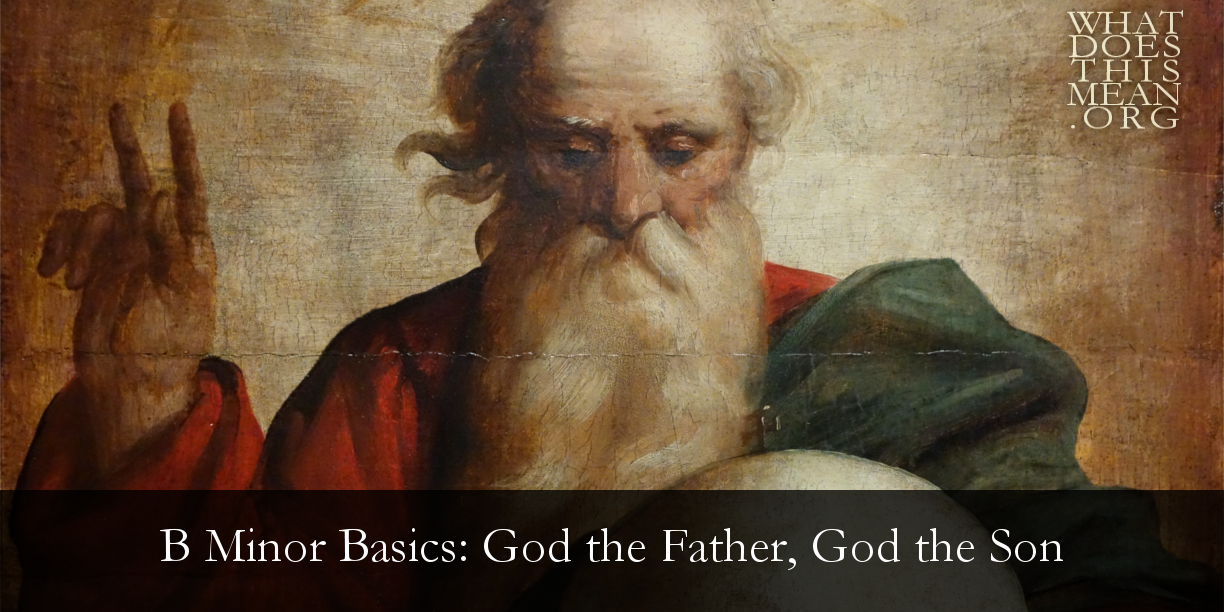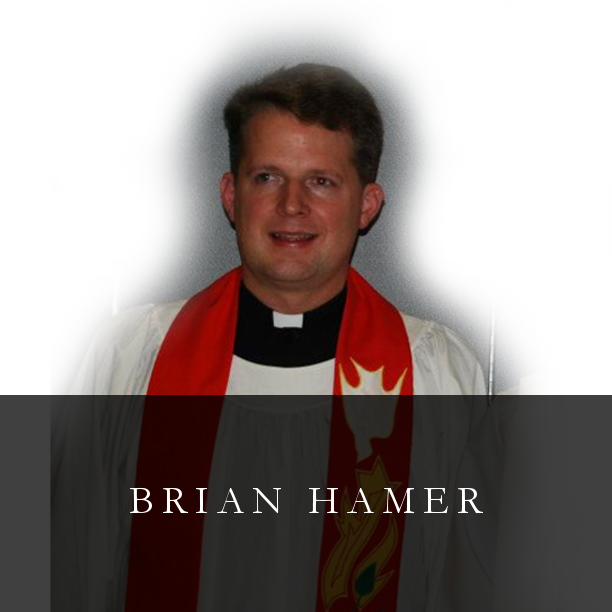by God’s grace, with fearless hearts and thus give account of our faith …
| Credo in unum Deum. | I believe in one God. |
A brief word is fitting at this point in our study about number symbolism (often falsely called “numerology”) in the Creed. Bach sometimes used the numerical representation of the alphabet (A=1, B=2, etc., with I/J and U/V combined in German) to embed number symbolism into his music. With this alpha-numeric formula in mind, the word “Credo” has a numerical value of 43. It is no coincidence that the word “Credo” is sung 43 times in this short movement. Moreover, there are a total of 129 measures in this movement and its companion, Patrem Omnipotentem, which may reflect 43 (the number of “Credo”) x 3 (the number of persons in the Trinity). I have spent precious little time on number symbolism since it is much easier to see than to hear, but faithful students of Bach should know that there is number symbolism in every movement of the Credo!
Now listen to the next movement, Patrem Omnipotenten, and hear a musical depiction of the strength and majesty of the Maker of heaven and earth:
| Credo in unum Deum Patrem omnipotentem, Factorem coeli et terrae, Visibilium omnium et invisibilium | I believe in one God, The Father Almighty, Maker of heaven and earth, and of all things visible and invisible. |
But see how the vocal scoring is for four parts, SATB, in contrast to the usual five-part scoring (SSATB) in most movements of the Mass. The surprise, however, is that there is a fifth part that functions in the thematic development, but it is the trumpet. Notice at 0:39 how the trumpet (see the top line of the score, labeled “Tromba”) enters with opening statement of the main theme, but then quickly climbs into the stratosphere, until the trumpet suddenly becomes musically “invisible” (1:00 in this video). This is an ingenuous depiction of “all things visible and invisible.” At 1:24, the trumpet returns, followed by the other two trumpets (do they symbolize the Trinity?), and once again the unexpected fifth voice of this movement becomes musically “visible.”
Following this movement on the majesty of the Father, the instrumentation and vocal scoring change significantly to depict His only-begotten Son. This duet for soprano and alto (or countertenor, as in the next video) is accompanied by two oboes, strings, and continuo (i.e., harpsichord and cello). For this duet, I invite you to return to the balcony of Bach’s own St. Thomas Leipzig, along with the musical descendents of his own choir. As you watch and listen, please ponder the Christological significance of the following pairs: two oboes, two violins, and two singers.
| Et in unum Dominum Iesum Christum, Filium Dei unigenitum, ex Patre natum ante omnia saecula. Deum de Deo, Lumen de Lumine, Deum verum de Deo vero, genitum non factum, consubstantialem Patri; per quem omnia facta sunt. Qui propter nos hominess et propter nostram salutem descendit de coelis. | And in one Lord Jesus Christ, the only-begotten Son of God, begotten of the Father before all worlds. God of God, light of light, very God of very God. Begotten, not made, of one substance with the Father, by whom all things were made. Who for us men and for our salvation descended from heaven. |
But notice how Bach briefly departs from this “step parallelism” of one voice leading the other at 3:04 for four measures of textual unison on these words: Deum verum de Deo vero, de Deo vero (“very God of very God”). This is the only time in this movement that the text is vertically aligned for an entire phrase of text. This unique device on the words “very God of very God” places a unique stress on the Divinity of the Son of God, a musical and theological accent that squares perfectly with the content and confession of the Nicene Creed. To be sure, I have generally called this section of the B Minor “Credo” as musical short hand, but Bach actually labeled it Symbolum Nicenum, the Symbol [i.e., confession] of Nicea, whose primary reason for existence was a staunch defense of the Divinity of the Son of God: “God of God, Light of Light, very God of very God.”
The Credo of the B Minor holds a unique place as Bach’s musical last will and testament. The Credo was written late in Bach’s life, not long before his death in 1750. In contrast to some other movements of the B Minor, it was not performed in Bach’s lifetime, and yet it was the object of his creative output and compositional energy, even while other works, including The Art of the Fugue, remained unfinished.The Credo was for Bach a confession that He was baptized into the Trinity, that he had lived to the greater glory of the Trinity, and that he would soon die in the name of the Trinity. If the Credo was his last musical confession, then the following prayer, later known as his “deathbed chorale,” was perhaps his last spoken confession. It is the prayer of all who believe in the Father Almighty, who are baptized into one Lord Jesus Christ, and who shall appear before His judgment throne with a fearless heart:
| Before your throne I now appear, O God, and humbly bid you, turn not your gracious face from me, a poor sinner. Confer on me a blessed end, on the last day awaken me, Lord, that I may see you eternally; Amen, amen, hear me. |
+ + +



 RSS Feed
RSS Feed
